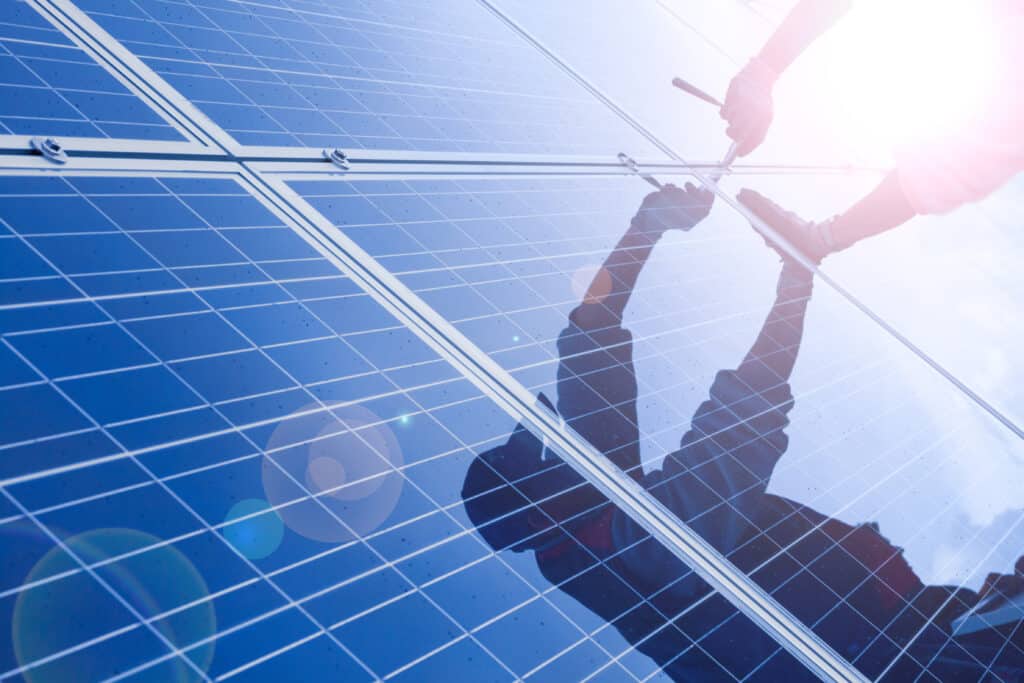Solar Panel Wattage and Output Explained | 2024 – MarketWatch
The electricity output of photovoltaic modules depends on the direct sunlight reaching their surface. That’s why solar panel productivity is higher in sunny locations and lower in cloudy weather conditions or in places where excessive shade comes from surrounding buildings. Under identical sunlight and temperature conditions, the energy output of solar panels depends on their efficiency.
Let’s discuss the primary factors that determine the amount of electricity generated by solar panels.
Efficiency
Solar panel efficiency can range from less than 10% to more than 20%. The efficiency rating is simply the amount of sunlight that gets converted into electricity, when the panel is tested under ideal conditions in a laboratory. As of 2023, the most efficient solar panels available in the market range from 20.60% to 22.80%, with SunPower panels at the top of the efficiency ranking.
In actual installations, the efficiency of solar panels is affected by factors like dust accumulation and high temperatures. You can prevent dust buildup by having your solar panels cleaned one or two times a year. There’s nothing you can do about high temperatures, and panels lose from 0.30% to 0.40% of their productivity for every Celsius degree of temperature rise. Fortunately, this is a temporary effect, and the lost efficiency gets recovered when panels cool.
Type of Panel
There are three main types of solar panels: monocrystalline, polycrystalline and thin-film. Here’s what you need to know about them.
- Monocrystalline panels are the most efficient. Each of their photovoltaic cells is a single crystal of high-purity silicon, which has a sophisticated production process.
- Polycrystalline panels have intermediate efficiency ratings. Their solar cells are made of multiple silicon crystals, as opposed to a single piece. This has a negative effect on panel efficiency, but production costs are less.
- Thin-film panels are the least efficient. This type of solar panel uses a layer of photovoltaic material, without crystalline structure, applied on a rigid or flexible substrate. However, there are now thin-film panels of the same efficiency as polycrystalline cells.
Thanks to their high efficiency, monocrystalline panels have the highest kilowatt-hour output per square foot covered. Industry experts consider them the best solar panels for homes, especially if roof space is limited.
You can classify solar panels based on the number of their photovoltaic cells. Most panels have either a 60-cell design in a 6×10 arrangement or a 72-cell design in a 6×12 layout.
- Traditionally, 60-cell panels are more common in home solar panel installations, while the larger 72-cell panels are used in commercial and industrial roofs.
- A 72-cell panel will be 20% more productive than a 60-cell panel because it has 12 more cells. Solar panels with a capacity of more than 400W normally have a 72-cell design.
Some solar manufacturers offer an in-between size and design with 66 cells. Some solar brands use half-cells with a higher efficiency, but the overall solar panel size does not change. They have 120, 132 or 144 half-cells in the same space (instead of 60, 66 or 72 full-sized cells).
Position
To increase the energy produced by solar panels, make sure they face the sun for as much time as possible throughout the year. The sun’s position in the sky constantly changes, and the ideal tilt angle for solar panels depends on your geographic location. The sun is lower in the sky as you reside farther north, and this means solar panels must be tilted more to increase the hours of direct sunlight.
Other than the optimal tilt angle, you must also consider the orientation of solar panels. In northern hemisphere countries like the U.S., it makes sense to have your panels face south because there is more sunlight coming from that half of the sky. However, west-facing and east-facing panels are useful in some applications:
- East-facing panels have a higher power production during the morning because the sun rises in that direction. They work well in schools and other buildings with a high energy consumption during the morning.
- West-facing panels are more productive in the afternoon. They make sense for buildings with a low morning consumption and a high afternoon consumption.
Location
As you can see in the Global Solar Atlas, annual sunshine depends on your geographic location. If two 6-kW solar power systems are installed in different states and one of them gets 30% more sunshine during the year, energy production also increases by around 30%.


